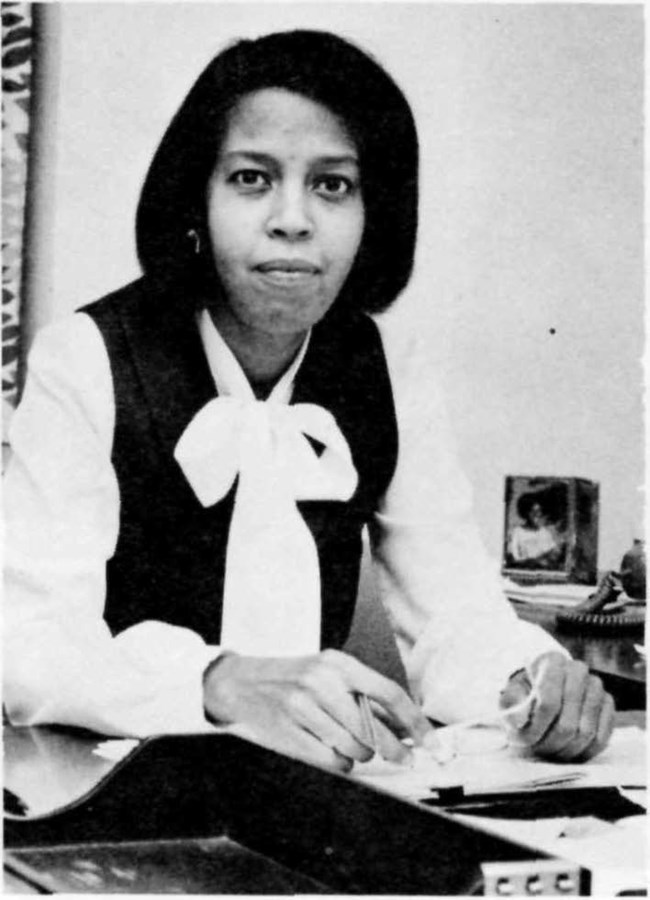Last updated: March 1, 2022
Article
Mary E. Jackson
Born in 1927, Mary E. Randolph was raised by her grandmother in Maysville, Kentucky. After graduating high school, she attended Kentucky State College for one year before transferring to Central State College in Ohio. She graduated in 1960 with a BS in business education. After participating in a student-teacher program, she decided teaching wasn’t for her. Instead, she got a job as a clerk-typist by the Department of the Army in Columbus, Ohio.
In 1963 she married Thomas W. Jackson. Together they had two daughters. After four years with the Army, she found her boss was getting credit and awards for her work, and she quit to stay at home with her first child.
After a couple of years, she returned to the federal workforce in a clerk-typist job with the Civil Service Commission in Dayton, Ohio. During the interview, she was asked how she would respond if a member of the public called her a specific, nasty, racist slur. Her boss admitted that he had never worked with Black people and thought she might experience overt racism. In reality it was more subtle, with some people asking for whites to serve them instead. She ran the agency’s summer employment program in 1965.
She passed the federal service entrance examination to gain access to professional occupation series in about 1966, earning a higher score then her boss had. He promoted her to a staffing specialist position that had a career ladder for additional promotions. She didn’t receive training for the new job and was excluded from the staff meetings men attended. She let her boss know that she was unhappy, and things improved.
Mary Jackson divorced her husband in February 1971. That same year she was promoted and offered transfers to both the Chicago and San Francisco regional offices. She chose the supervisory job in San Francisco. She moved to California with the children, then aged eight and five, as a single parent. After about a year and a half in San Francisco, her ex-husband fell ill with cancer. Her supervisor arranged for her to detail into a position in Dayton so that the children could be near him. He died shortly after. While she was in Dayton, her home in San Francisco was burgled.
Jackson decided it was time for a change and that she wanted to live closer to family. In April 1973, she became assistant to the director of the Federal Women’s Program with the Civil Service Commission in Washington, DC. After just two weeks she became disillusioned with the job, convinced that the director wasn’t going to do much in the way of Equal Employment Opportunity (EEO) programs.

In March 1980 Jackson was hired by the National Park Service (NPS) to be chief of the Branch of Employee Evaluation and Staffing. She and her staff were responsible for developing programs and policies to implement employment and staffing regulations within the bureau. One of her early responsibilities was implementing a new employee performance evaluations system as required by the Civil Service Reform Act of 1978.
Her office was also responsible for the Federal Equal Opportunity Recruitment Program (FEORP), which required agencies to recruit minority and female candidates, particularly in occupations where they were poorly represented. She oversaw the Student Co-op Education Program, used to appoint students to temporary positions within the NPS. The program was an important source of minority and women candidates for NPS positions. She also led programs to hire individuals with disabilities and veterans, as well as the upward mobility program that allowed employees who demonstrated potential to take on more responsibility and move up within the organization.
Although she worked for the NPS for over 15 years, Jackson was initially reluctant to join the bureau. In a 1985 oral history interview, Jackson commented that she had “hear[d] bad things about the National Park Service, that it was behind in times, that it wasn’t an organization that women or minorities would want to work in.” Jackson also reflected that “The NPS is more male-oriented than other federal agencies I’ve worked for. They still can’t accept a woman in a supervisory management position.”
Little information is available about her later career. In 1994 Jackson was awarded the Department of the Interior’s Distinguished Service Award for her skill in planning the automation of personnel systems. She was the first Black woman from the NPS to receive this award. In 1995 she was also recognized for her outstanding administration and human management. It’s not clear when she retired from the NPS.
Sources:
Jackson, Mary interview by Polly Kaufmann. (1985, December 12). Polly Kaufman Collection. NPS History Collection, Harpers Ferry Center.
Kentucky, U.S., Birth Index, 1911-1999 [database on-line]. (2006). Provo, UT, USA: Ancestry.com Operations Inc.
National Park Service. (1981, March). Mary Jackson and ‘her’ program for employees. Courier: The National Park Service Newsletter, 4 (3), pp 7.
National Park Service. (1982, Spring). Interpretation. Courier: The National Park Service Newsletter, pp 2.
National Park Service. (1983, November). Phase II, Realignment Plan. Courier: The National Park Service Newsletter, 28 (11), pp 17.
Ohio, U.S., Divorce Abstracts, 1962-1963, 1967-1971, 1973-2007 [database on-line]. (2010). Provo, UT: Ancestry.com Operations, Inc.
Explore More!
To learn more about Women and the NPS Uniform, visit Dressing the Part: A Portfolio of Women's History in the NPS.
This research was made possible in part by a grant from the National Park Foundation.
